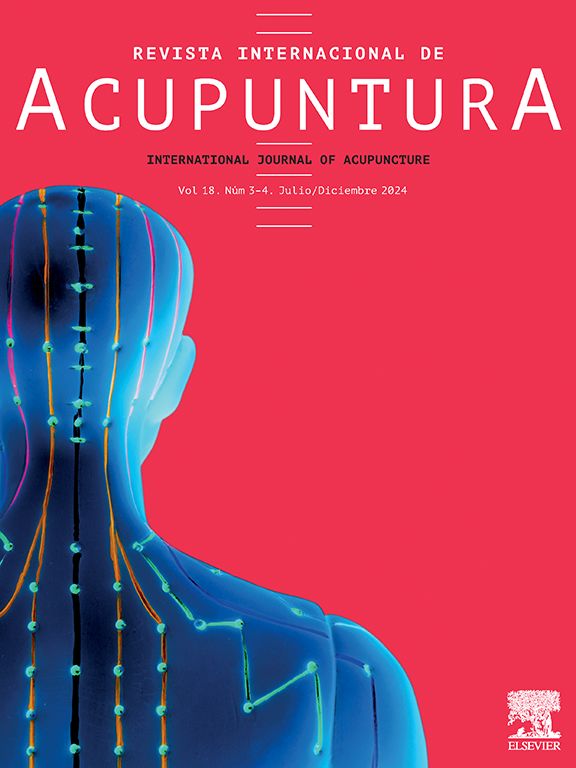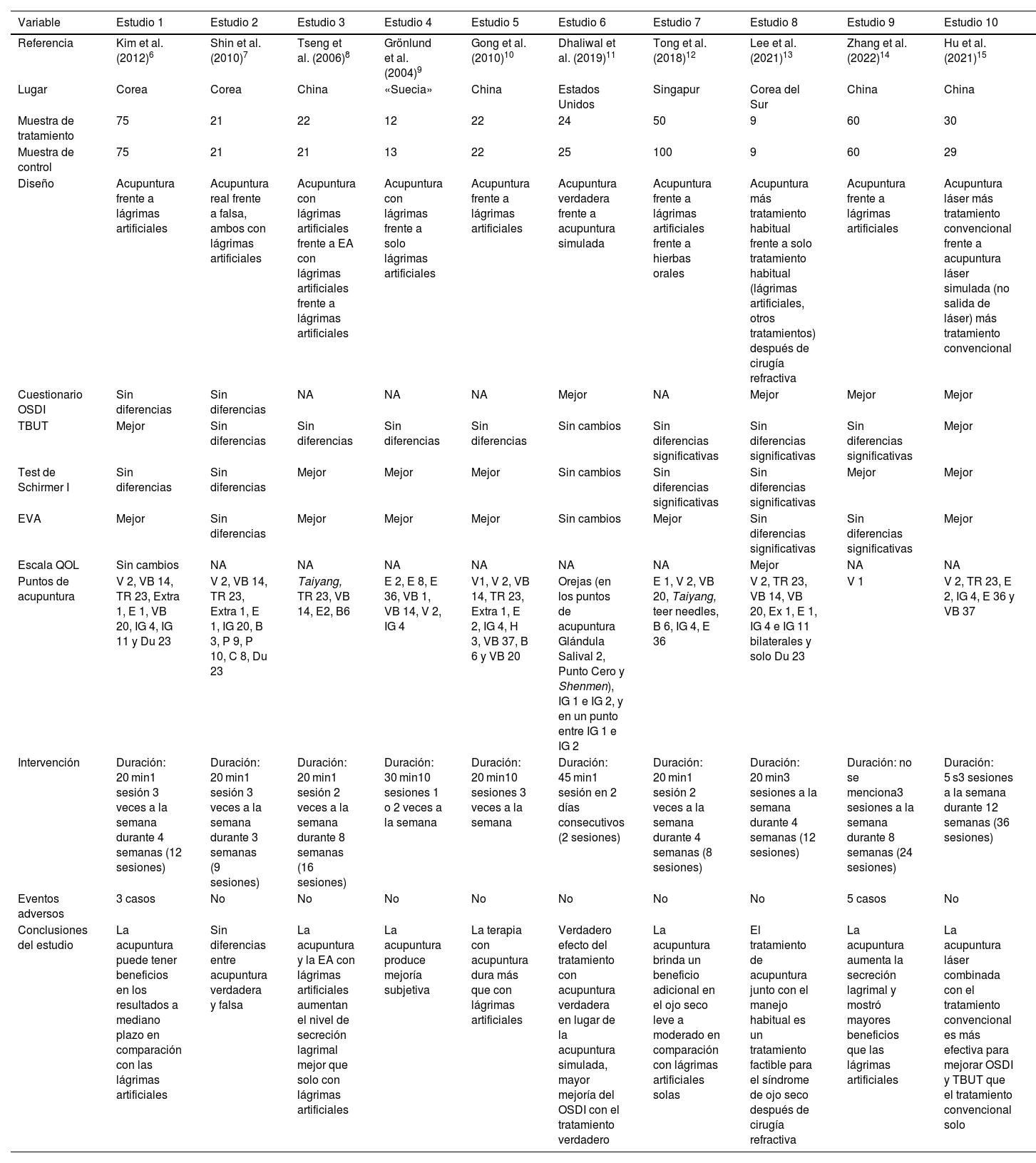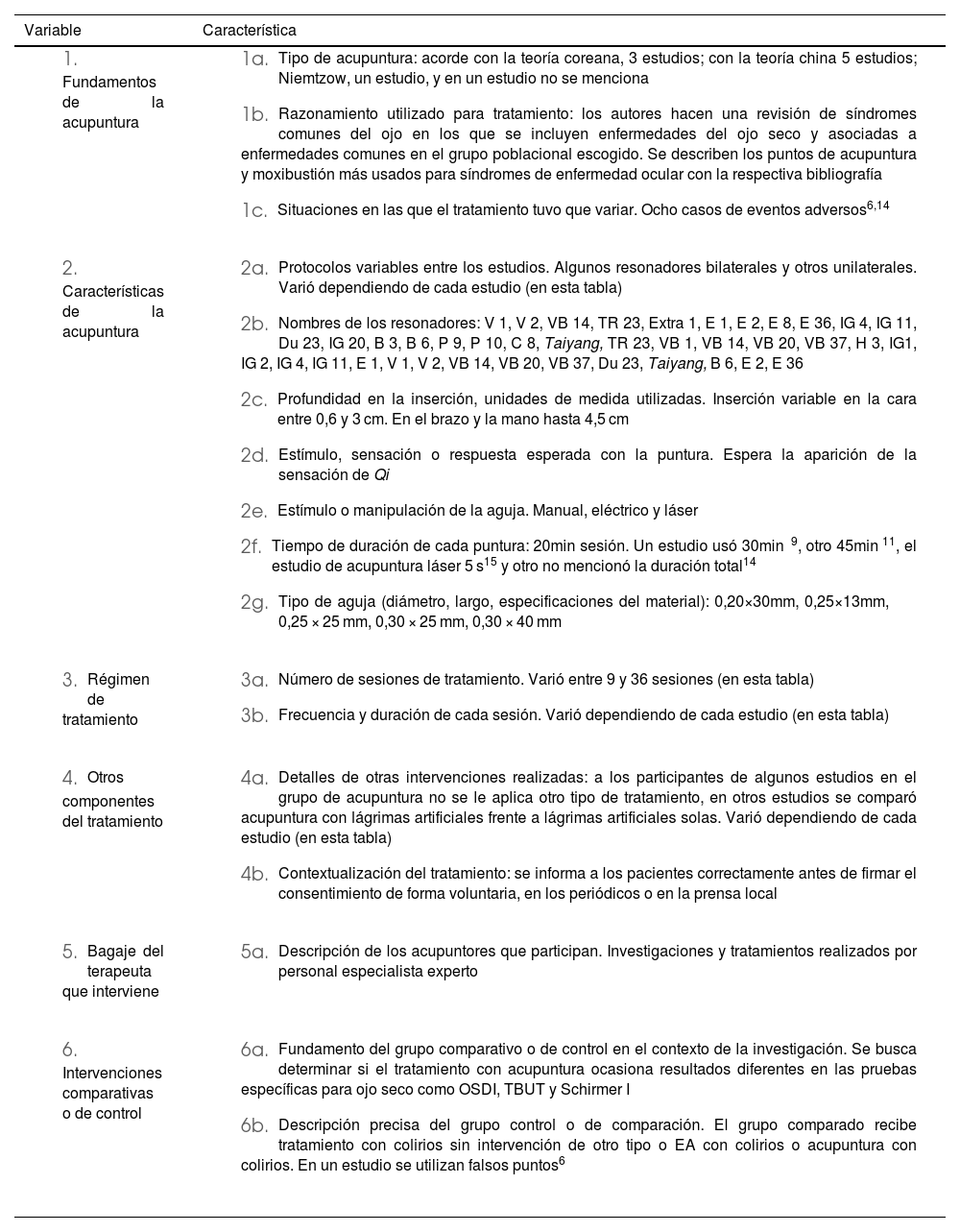describir la eficacia de la acupuntura en el manejo del ojo seco reportada en la literatura científica.
Diseñose realizó una revisión sistemática de la literatura de artículos publicados sobre el tratamiento de ojo seco con Medicina Tradicional China, específicamente con acupuntura.
Fuentes de datosse incluyeron estudios científicos de los últimos 20 años, realizados globalmente e indexados en motores de búsqueda como PubMed, SciELO y Cochrane. La estrategia de búsqueda se hace con base en los siguientes términos: «dry eye» AND «acupuncture».
Selección de estudiosse seleccionaron estudios sobre cualquier población y género y que fueran pacientes adultos con ojo seco. La búsqueda arrojó 296 artículos en PubMed, 54 en Ovid, uno en Cochrane y uno en SciELO. De estos, 16 cumplieron los criterios de inclusión y 6 correspondían al mismo estudio en diferentes fases. Al final se incluyeron 10 ensayos clínicos para el análisis.
Extracción de datosla información se llevó a una base de datos en la que se calificó el nivel de evidencia científica y se analizaron los resultados para definir el grado de evidencia y de efectividad de la acupuntura en el tratamiento de este tipo de patología (escala STRICTA).
Resultadosse encontraron 10 estudios que cumplieron los criterios de inclusión. Los puntos de acupuntura empleados y el tiempo de acción fueron muy similares entre los estudios. En 9 de los estudios se observó una mejoría significativa en varias pruebas objetivas y en el análisis de los síntomas, favoreciendo el tratamiento con acupuntura. Un estudio que comparó puntos verdaderos con puntos placebo de acupuntura, no encontró diferencias significativas entre el grupo de tratamiento y el grupo control. En los demás estudios, se evidenció que el efecto de la acupuntura fue más prolongado que el de lágrimas artificiales, con una mejoría estadísticamente significativa mayor que el grupo control, tanto en acupuntura como en electroacupuntura, con respecto al grupo control.
Conclusionesel uso de acupuntura y de electroacupuntura mostró ser efectivo en el tratamiento del ojo seco, teniendo en cuenta los puntos de acupuntura específicos para la patología y de manera individual para el síndrome respectivo de acuerdo con la Medicina Tradicional China.
To describe the effectiveness of acupuncture in the management of dry eye as reported in the scientific literature.
DesignA systematic literature review of published articles on the treatment of dry eye with traditional Chinese medicine, specifically acupuncture, was conducted.
Data sourcesScientific studies from the last 20 years, carried out globally and indexed in search engines such as PubMed, SciELO, and Cochrane, were included. The search strategy was based on the following terms: “dry eye” AND “acupuncture”.
Study selectionStudies were selected from any population and gender, involving adult patients with dry eye. The search yielded 296 articles in PubMed, 54 in Ovid, 1 in Cochrane, and 1 in SciELO. Of these, 16 met the inclusion criteria, and 6 corresponded to the same study in different phases. In the end, 10 clinical trials were included for analysis.
Data extractionThe information was entered into a database where the level of scientific evidence was assessed, and the results were analyzed to define the degree of evidence and effectiveness of acupuncture in the treatment of this type of pathology (STRICTA scale).
ResultsTen studies met the inclusion criteria. The acupuncture points used, and the action time were very similar between studies. In nine of the studies, a significant improvement was observed in several objective tests and in symptom analysis, favoring treatment with acupuncture. One study that compared real acupuncture points with placebo acupuncture points found no significant differences between the treatment group and the control group. In the other studies, it was evident that the effect of acupuncture was longer-lasting than that of artificial tears, with a statistically significant greater improvement than the control group in both acupuncture and electroacupuncture, compared to the control group.
ConclusionsThe use of acupuncture and electroacupuncture was shown to be effective in the treatment of dry eye, considering the specific acupuncture points for the pathology and individually for the respective syndrome according to traditional Chinese medicine.








